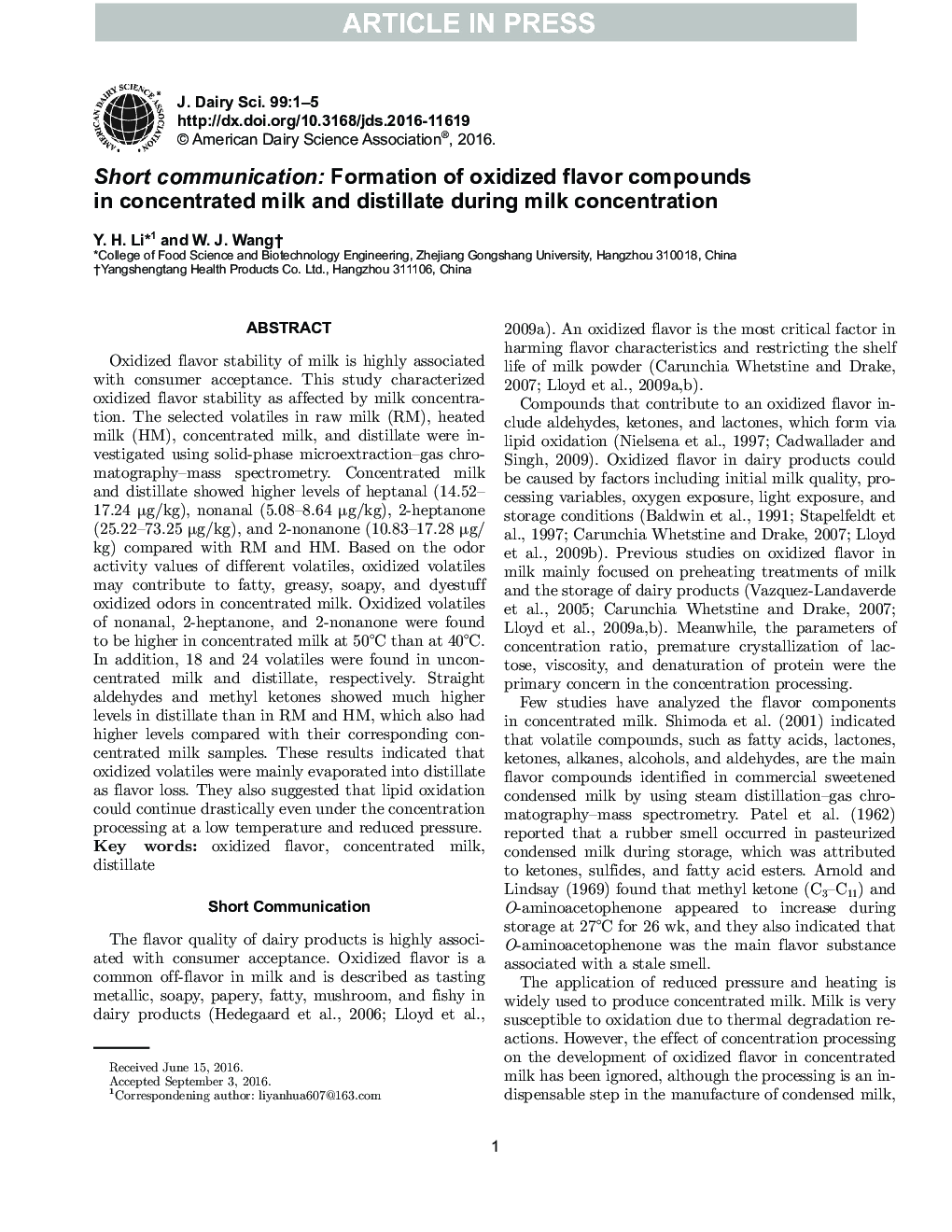| Article ID | Journal | Published Year | Pages | File Type |
|---|---|---|---|---|
| 5542737 | Journal of Dairy Science | 2016 | 5 Pages |
Abstract
Oxidized flavor stability of milk is highly associated with consumer acceptance. This study characterized oxidized flavor stability as affected by milk concentration. The selected volatiles in raw milk (RM), heated milk (HM), concentrated milk, and distillate were investigated using solid-phase microextraction-gas chromatography-mass spectrometry. Concentrated milk and distillate showed higher levels of heptanal (14.52-17.24 μg/kg), nonanal (5.08-8.64 μg/kg), 2-heptanone (25.22-73.25 μg/kg), and 2-nonanone (10.83-17.28 μg/kg) compared with RM and HM. Based on the odor activity values of different volatiles, oxidized volatiles may contribute to fatty, greasy, soapy, and dyestuff oxidized odors in concentrated milk. Oxidized volatiles of nonanal, 2-heptanone, and 2-nonanone were found to be higher in concentrated milk at 50°C than at 40°C. In addition, 18 and 24 volatiles were found in unconcentrated milk and distillate, respectively. Straight aldehydes and methyl ketones showed much higher levels in distillate than in RM and HM, which also had higher levels compared with their corresponding concentrated milk samples. These results indicated that oxidized volatiles were mainly evaporated into distillate as flavor loss. They also suggested that lipid oxidation could continue drastically even under the concentration processing at a low temperature and reduced pressure.
Keywords
Related Topics
Life Sciences
Agricultural and Biological Sciences
Animal Science and Zoology
Authors
Y.H. Li, W.J. Wang,
